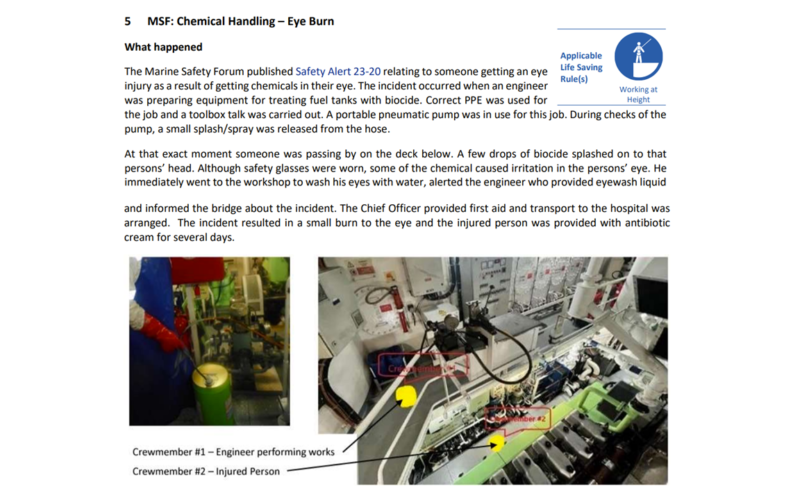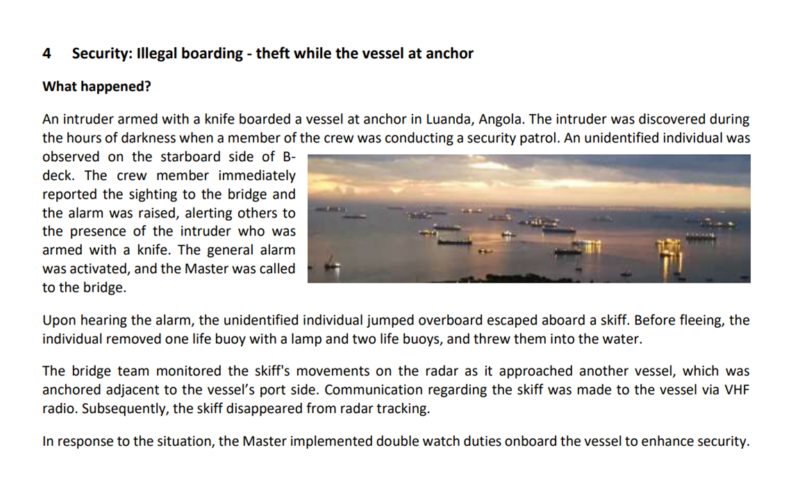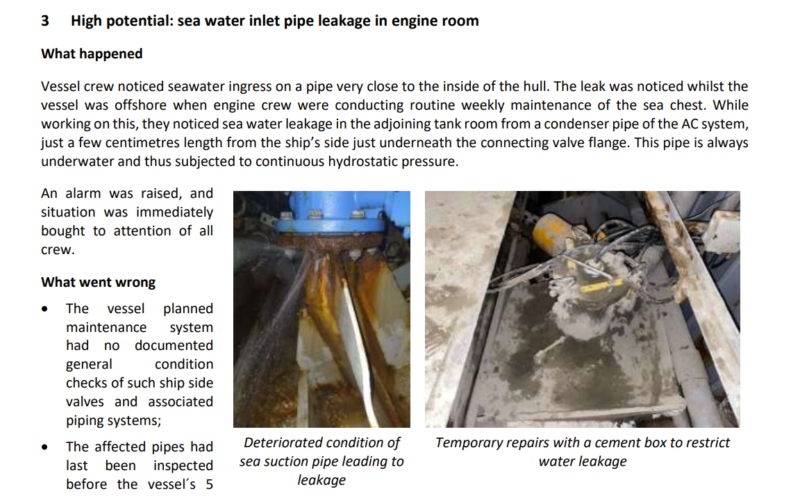Cause & Consequence
- Fall from height
Incident Location
Support vessel eg Supply, Standby
Incident Activity
Any Activity Type
Incident Info Source
SBS Marine Malcolm Bradbury m.bradbury@sbsmarine.com
Specific Incident Equipment
Rig crane pennant wire
Lessons Identified
The rig crane operator confirmed that at the time of the incident that there had been a contra roll between the rig and the vessel, which caused an erratic swing of the crane “Headache Ball” resulting in a tightening of the pennant wire.The vessel crew concurred that the crane pennant wire was not too short for this operation.The deck crew were not “Cherry Picking” and restricted working space was not an issue.The injured AB was working a 6 on 6 off shift and had been on duty since 1800 and was well rested prior to the incident. Therefore, tiredness was not a contributing factor.The injured AB is considered by the vessel Master to be experienced in his duties, although relatively new to the North Sea. Both AB’s worked well as team and have no other incidents prior to this.The practice of walking the pennant wire along the deck to the next lift in relatively calm weather conditions had become “Normal Practice” over a period of time.
Incident Recommendations
All company vessel crews have now been informed by Safety Alert that they are not to walk the crane pennant wire to the next lift, even over short distances. In future they are to drop the hook, vacate the area and await the crane to reposition near the next lift.A suitable and sufficient Risk Assessment prior to commencing the task should identify this practice as being " at Risk". The above recommendations should be adhered to as part of the risk reduction procedure.DON’T WALK THE CRANE HOOK – LET THE CRANE DO IT
Rate this alert
Average Rating
Latest Alerts & Moments
Our searchable catalogue of hundreds of Safety Alerts and Safety Moments are all designed as learning resources that can help improve workplace safety.


